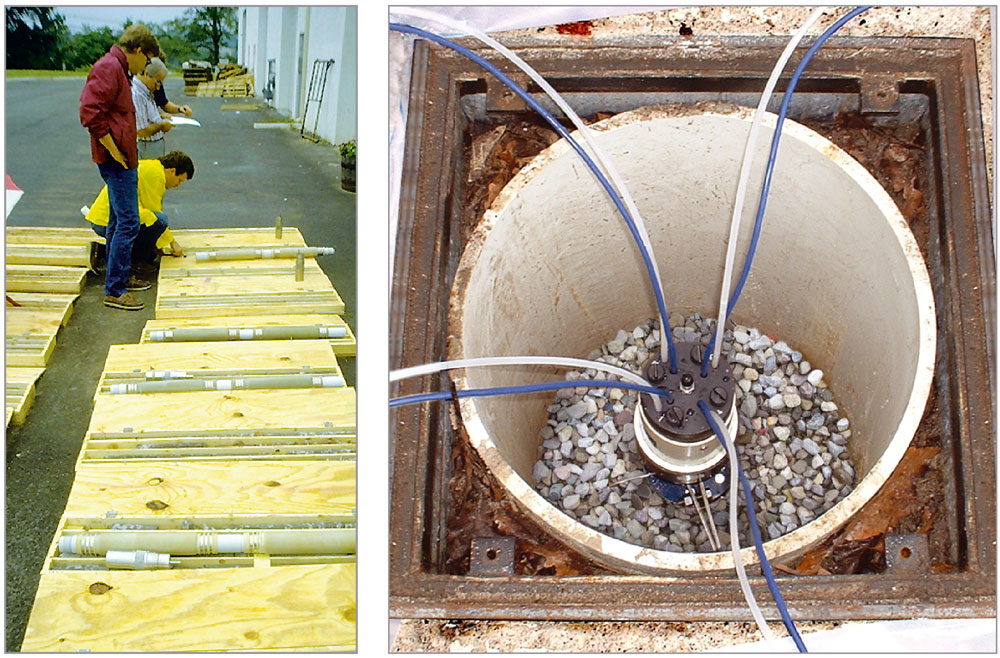Waterloo System Flexibility
Depth Discrete Groundwater Monitoring
Reduce Costs and Field Time
Waterloo System Flexibility
The Waterloo Multilevel System is flexible to meet your design criteria. Each Waterloo System is customized to suit unique monitoring needs, and subsurface site conditions:
- Bedrock or overburden applications
- Groundwater or vadose zone monitoring
Packers and ports are installed precisely to monitor each isolated, discrete zone of interest, eliminating any crosscontamination across zones.
Overburden Applications
Waterloo Multilevel Systems can be used to monitor multiple zones within unconsolidated formations, as well as in bedrock.
There are three methods of Waterloo System installation:
- Within the drill stem or temporary casing. Flowing sand formations are allowed to collapse around the Waterloo System.
- Within the drill stem or temporary casing using standard tremie methods to place sand around the ports and bentonite seals in the annular space between the monitoring zones, as the drill stem or temporary casing is lifted.
- Within a cased and screened well, using packers to seal zones.
Installation within Wellscreen/Casing
A permanent 3″ or 4″ casing and screen string can be installed by a drilling contractor using typical sand and bentonite placement methods. Then a Waterloo System can be installed within the screen and casing string with ports and permanent packers.
Borehole Size Considerations
Waterloo packers are designed for use in 3″- 4″ boreholes (75 – 100 mm). Systems can be installed in larger boreholes using:
- Placement of sand and bentonite to isolate specific monitoring zones
- 3-4″ screen and casing, installed within a larger hole, completed by installing a Waterloo System with packers.

Using core logs to identify placement of Ports and Packers (left). Multi-Purge Manifold with transducers and dedicated pumps for four zone monitoring (right).
Standard 2" (50 mm) Waterloo System
Number of Monitoring Zones Per Hole
The maximum number of monitoring zones for a Waterloo System is determined by the number of tubes and/or cables that will fit inside the casing string. This number is dependent on the monitoring options chosen. Systems can be designed to monitor from 2 to as many as 24 zones.
